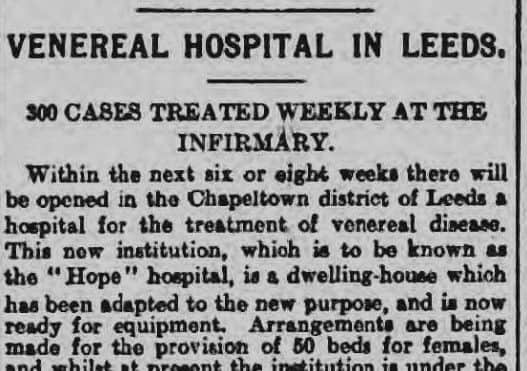Armistice 100: Leeds rife with venereal disease in 1918
and live on Freeview channel 276
The new institution was to be known as “Hope” hospital and was “a dwelling house which has been adapted to the new purpose, and is now ready for equipment”
The article goes on to say that preparations were being made for the provision of 50 beds for females and that while at the time the venereal clinic was under the control of medical officer Dr Vining, it was expected that a female would soon take over the role on a full time basis.
Advertisement
Hide AdAdvertisement
Hide AdThe article notes: “Some idea of the extent of the prevalence of the disease may be obtained from the fact that since June, 1917... and the venereal department opened at Leeds Infirmary, the number treated there has reached nearly 2,000 and there is now an average of 300 patients visiting the infirmary each week.” It goes on: “Nearly all these are out-patients who reside in the West Riding... they include male and female, the proportion in the sexes being about equally divided.”


In other news, there was a report on a group of Belgian exiles living - and by all accounts thriving - in Leeds. A school for Flemish children stood at the bottom of Cavendish Street in “an uncurtained brick house” The article said that the yard behind the house served as a playground and would take up to 125 children. It was an attempt to check the process of “de-nationalisation”, to teach them of their own history and speak their own language.